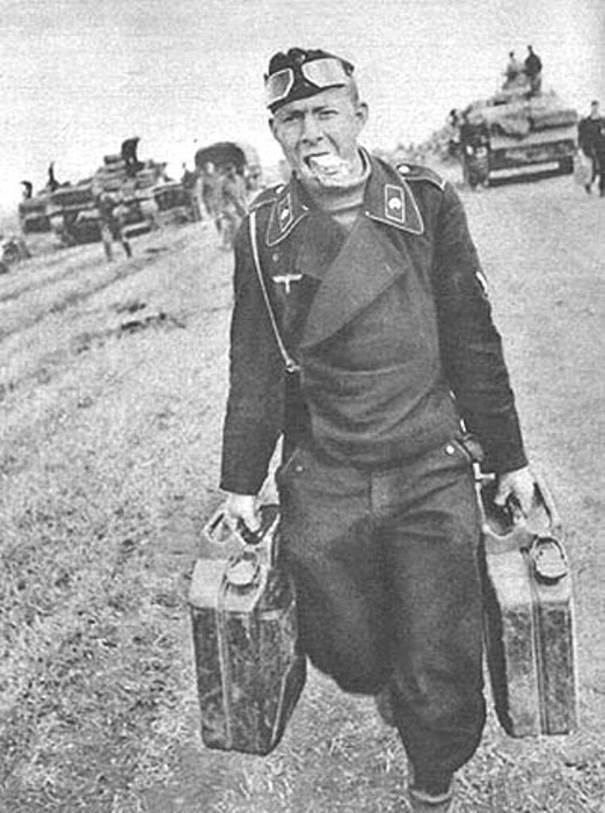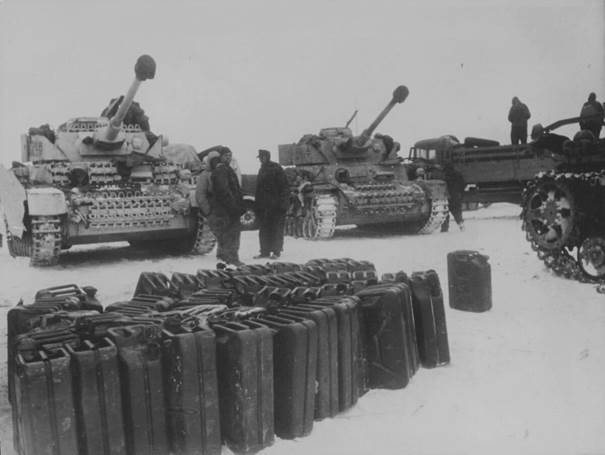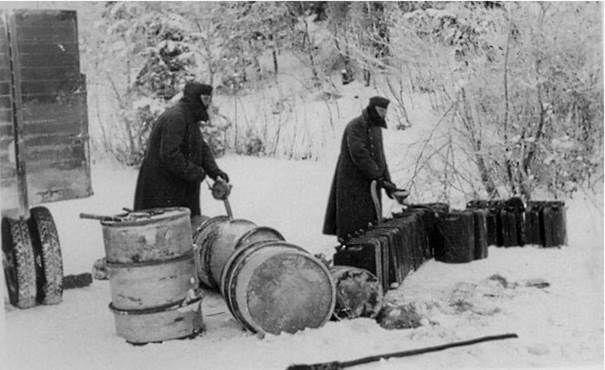Artificial fuel of the Wehrmacht and what happened to it in the Russian winter.
Welcome. I think it’s no secret that Nazi Germany had a big problem with fuel. But perhaps not everyone knows that Germany had its own fields and produced oil. Relatively little, but in peacetime it was quite enough. But now the time of war has come, and the war is modern, where engines play an important role. And what to do? There is a way out – to try to make synthesized fuel from hard and brown coal, of which there were at least a lot on the territory of Germany. Fortunately, they learned how to extract oil from coal even before Hitler came to power. Three German scientists discovered different ways of doing this – Friedrich Bergius, back in 1913, and Franz Fischer and Hans Tropsch a little later.

To make you stumble! Photo from the Internet.
There were several types of gasoline and diesel fuel, but all synthetic fuel had one problem – it thickened in frosts from -20 ° C and the equipment simply broke down. This applied not only to tanks, automobiles and other land transport, but also to German aviation, which, in the first winter of the war with the USSR, was actually useless and depended only on the supply of high-quality “real” gasoline. So it would be appropriate to note that this is one of the reasons why our heroic ancestors managed to hold out for the first winter and manage to build up their strength. General Moroz helped them greatly, not only freezing the enemy, but also simply immobilizing his equipment. For the same reason, when retreating from Moscow, the German troops abandoned so many serviceable vehicles. Then the Germans will find ways to improve fuel, use heaters for aircraft and other wisdom, but nevertheless, every winter until the end of the war, they will be tormented by equipment that fails due to frost.

Refueling of German tanks. It’s okay, everyone will be melted down in the Soviet metallurgy! Photo from the Internet.
It is also worth talking a little about the types of gasoline that were used in the German troops and aviation. Each of which had its own color. Let’s figure out which one and why:
Vergaserkraftstof is a red motor gasoline. The octane number is 72. In general, it was poured into the tanks of trucks, tanks and other tracked and wheeled vehicles. It was he who became the culprit of a huge amount of abandoned equipment near Moscow. Later, it was modernized.
A3 is a blue aviation gasoline. The octane number was 70, but with the addition of tetraethyl lead, the octane number increased to 80. It was used to refuel training and liaison aircraft. At the end of the war, it was poured into the tanks of combat aircraft.
B4 – aviation gasoline is also blue, but slightly darker. The octane number is 72. When tetraethyl lead was added, the octane number increased to 89. It was used to refuel bombers and transport aircraft.
C3 is a green aviation gasoline. The octane number is 80. But during the war years, the Germans increased its number from 94 at the beginning of the war to 97-98 at the end. This gasoline was poured into the tanks of fighters.
C2 is an aviation gasoline with the same properties as C3, but made from real petroleum. Its main advantage is that it did not freeze in low temperatures.
Since the Germans also had diesel planes, there were also two types of diesel fuel: E1 – from oil and E2 – synthetic. Jet fuel, labeled J2, stands separately.

They’re freezing, dogs. You can feel it through the screen. Photo from the Internet.
It is also worth noting that if all ground equipment and aviation moved in space mainly on synthesized fuel, then the “real” diesel fuel and fuel oil were used for the needs of the German Navy, which consumed them in huge quantities, although it was actually useless, with the exception of submarines. And here the allies – Romania and Hungary – helped Germany as much as they could with fuel.
German planes also need a lot of fuel. To burn more beautifully and stronger. Photo from the Internet.
And another interesting point, since I started talking about “real” fuel. Until the end of the war, there were deliveries from Spain, where the caudillo Franco was very worried about his friend Adolf, but did not get involved in the war. And fuel – yes, please, but the truth is for money. Spain quietly bought oil from American corporations that controlled fields in Latin America and did not bother to resell it to Germany at all. And everyone knew about it, but everyone kept silent, because money is money. And Spain seems to be neutral and does not participate in hostilities, and that’s fine. British and U.S. warships did not touch the Spanish-flagged tankers, even though the Allies were well aware of where they were sailing and for whom they were carrying oil. Just like that.
And tanks need it too. It would be good to have a low-quality one.
